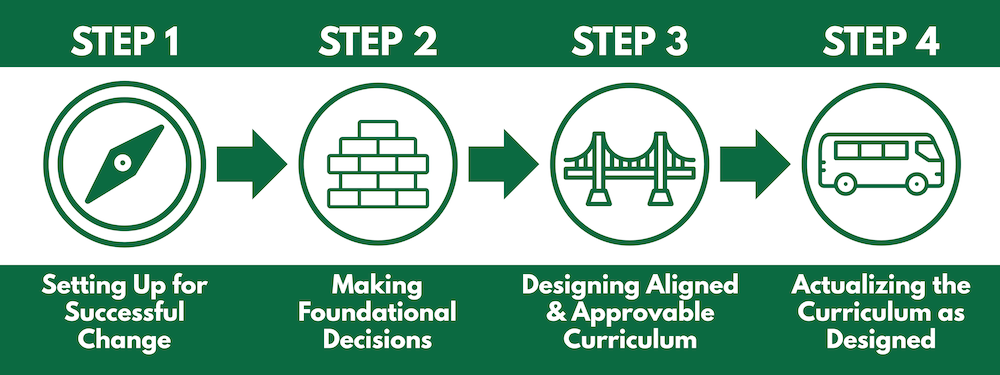Curriculum development
Curriculum development and renewal is the process of reviewing, designing, and implementing new and revised programs.
Whether you are renewing a program or refining a course, the Gwenna Moss Center for Teaching and Learning (GMCTL) offers expert support, including custom curriculum mapping and course planning tools. Our comprehensive guidebook and 4-step framework make the process clear, efficient, and impactful.
The 4-Step Renewal Process
Tried, tested, and trusted at USask, this 4-step curriculum renewal process is grounded in educational research and real-world success - helping you avoid common pitfalls, align your program with what matters most, and in moving forward with clarity and confidence.


 Setting up for successful change
Setting up for successful change
Learn how to effectively identify the reasons for change, establish timelines, and form a representative committee to guide the process. Executing Step 1 in an informed manner allows you to build shared understanding and trust among all parties, ensuring the process is inclusive, transparent, and strategically planned from the beginning.

 Making foundational decisions
Making foundational decisions
Here, you clarify institutional requirements and define program-level outcomes that reflect your academic goals and learner needs. This step gives you a strong foundation for decision-making, helping you align your curriculum with institutional standards and future design efforts.

 Setting up for successful change
Setting up for successful change
This step provides guidance on how best to map courses to outcomes, sequence learning experiences, and apply sound pedagogical principles to create a coherent and effective curriculum. This helps you design meaningful learning pathways and ensures the curriculum meets both internal and external approval requirements.

 Actualizing the curriculum
Actualizing the curriculum
In this final step, you implement the curriculum through course development and set up systems to gather feedback to support continuous improvement. Doing so strategically ensures that your curriculum is not only delivered effectively, but also evolves based on evidence, reflection, and student needs.
Get support
For support or a consultation on this topic, reach out to the team at the Gwenna Moss Centre for Teaching and Learning.

